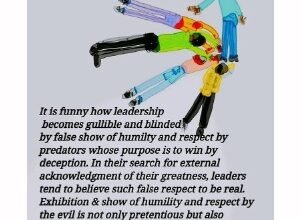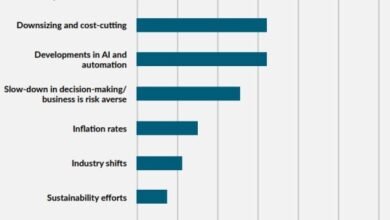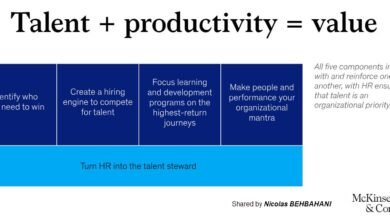
By | Dave Ulrich | Speaker, Author, Professor, Thought Partner on HR, Leadership, and Organization
Overall, in the United States, intangibles represent about 80 percent of a firm’s market value. For some time, Norm Smallwood and I have written about these intangibles, which include leadership, organization capability, culture, and talent. In today’s business context, two intangibles are getting increased attention: ESG–or environmental, social, and governance—and human capability. ESG includes attention to a host of sustainable social citizenship efforts. Human capability refers to an array of talent, leadership, organization, and HR function initiatives.
ESG and human capability efforts have much in common. Both focus on how non-financial initiatives shape an organization’s reputation in the financial markets, marketplace, and workplace. Both deal with socially desirable aspirations. Both are gaining attention and discussion with investors, customers, boards, and senior executives. Both are increasingly part of public disclosures through social media and regulatory disclosures (U.S. Securities and Exchange Commission). Both have inspired many corporate declarations and initiatives. Both have the risk of being politically divisive and the challenge of focusing on the business. Let me suggest three options to connect these two agendas so that they complement each other to create value for all stakeholders.
1. ESG Agenda Drawn on the Human Capability Evolution
The recent evolution of the human capability agenda might be informative for the ESG agenda. I have suggested four stages of the people and organization agenda (figure 1), moving from a set of administrative processes to an array of “HR” initiatives to a focus on how human capital (talent) matters and finally to human capability with four pathways (talent, leadership, organization, and HR) that deliver value to five stakeholders (employee, business, customer, investor, and community).
This emerging human capability logic offers a foundational framework (four pathways) for organizing an array of 37 initiatives that come from our and other research on these four pathways (see figure 2). This integrated framework provides a simple (four pathways) and thorough (37 initiatives) way to include human capability considerations in any business discussion: Do we have the right talent, leadership, organization, and HR function to deliver value?


These 37 human capability initiatives can be prioritized by the extent to which they deliver stakeholder outcomes. This then informs which human capability investments an organization should invest in to achieve tailored results. We call this the Organization Guidance System. Each column in figure 3 represents a desired stakeholder outcome: our research identified how each of the 37 initiatives (rows) impacted each stakeholder outcome. Figure 3 includes preliminary research showing the importance of each human capability initiative for each of the stakeholder outcomes (green shows high impact of the initiative, yellow moderate, and white less).

Current human capability work further applies machine learning / natural language processing to public disclosures to scale the assessment of human capability initiatives and improve disclosures. Note: we are hosting a complimentary webcast on November 17 with the Conference Board to share these results: Register here: Human Capability and Company Performance (conference-board.org).
By having an integrated framework to organize a host of initiatives, assessing how those initiatives deliver stakeholder outcomes, and using AI to scale these insights, human capability is evolving to deliver more value. This evolution may inform the developing ESG agenda to move along the same journey.
2. Human Capability as a Subset of ESG
Currently, ESG includes a large host of initiatives intended to build an organization’s reputation for having a sustainable social citizenship agenda ranging from issues related to the planet (environment), people (social), philanthropy (social), or political (governance) processes. This large array of initiatives have been defined through efforts like the United Nations seventeen social development goals and ISO 26000 standards. Most of these ESG agendas include people-related issues as part of their blueprints. Many of these people-related issues are broad societal issues (e.g., no poverty, zero hunger, good health and well-being, quality education, gender equality, human rights) more than specific people and organization initiatives (like the 37 initiatives in figure 2).
Some organizations are melding their human capability work into this broad ESG agenda. On the one hand, this makes sense because all of these intangible issues are aspirational and socially desirable. Managing human capability is clearly part of an overall social citizenship agenda. A company’s overall reputation is tied to a host of people, planet, philanthropy, and political issues. Companies are preparing ESG reports that communicate commitment to these broader environmental trends.
On the other hand, by subsuming human capability issues inside an ESG report, specific human capability initiatives may be overlooked, discounted, or neglected. When attention on human capability focuses on broad social themes (e.g., social justice, fair pay, poverty), the specific initiatives that deliver stakeholder value may be underappreciated and undervalued. To have sustainable impact, broad aspirations require specific actions or they become empty promises. When embedded in broad ESG logic, the specific human capability initiatives that deliver community reputation (or social citizenship) may not be prioritized (as in figure 3). In addition, human capability initiatives also have a “home” in most organizations with HR professionals being charged with prompting talent, leadership, and organization decisions in business conversations.
3. Human Capability as Enabler of ESG
A third way to connect ESG and human capability is to consider ESG as a relevant corporate priority, then to use human capability choices as a way to help make ESG happen. In this logic, a company may have any number of priorities (e.g., digital transformation, strategic reinvention, customer connection, product innovation, and so forth). For any of these priorities, human capability choices are critical to taking action on the aspiration. For example, we have identified steps of making digital transformation happen that can be applied to ESG (figure 4). HR professionals can be architects and facilitators for these six steps.

In addition, for ESG to happen, the human capability framework (in figure 2) informs choices and helps with decisions.
Talent:
- What skills are required for ESG to happen?
- How can the organization acquire or develop those skills?
- How can commitment to ESG improve employee commitment and engagement?
Leadership:
- Who is the leader of the ESG effort?
- What can executives say and do that will lead the way and sustain the ESG agenda?
Organization:
- Where does ESG fit in the organization structure?
- How does ESG fit with strategic purpose, customer promises, and investor disclosures?
- How can ESG move forward quickly through a disciplined change and accountability process?
- What are the metrics for ESG and how can they be tracked and be part of performance accountability?
Human resource function:
- How can HR practices (performance management, development, communication) be designed to foster ESG progress?
- How can HR professionals partner with ESG professionals to make progress?
By answering these questions, human capability work enables ESG and moves it into an actionable agenda.
Conclusion
Intangibles matter and the increased attention on ESG and human capability are part of those discussions. These three options for connecting ESG and human capability help these efforts complement each other and move each forward.
Republished with permission and originally published at Dave Ulrich‘s LinkedIn






